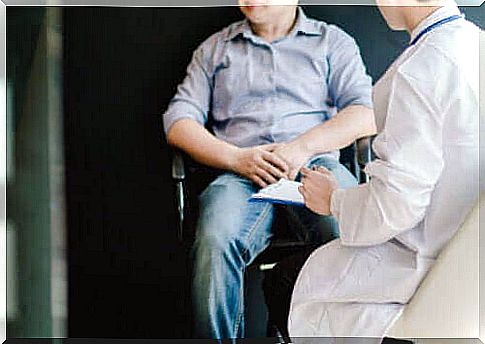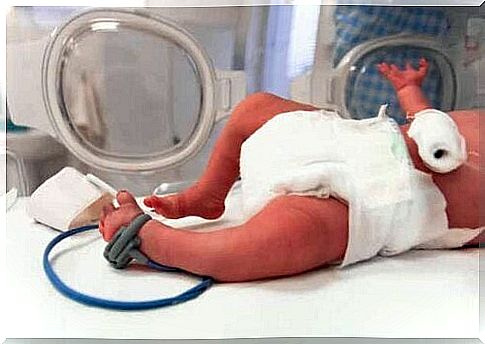What Is Cryptorchidism Or Undescended Testicles?

Cryptorchidism, or undescended testicles, is a condition characterized by the incomplete descent of one or both testicles through the inguinal canal into the scrotum. According to medical sources, the pathology is present when the testicle is permanently absent from the scrotum by the age of six months or more (Spanish link).
Specialists estimate that the prevalence of this condition, that is, the number of patients in a given population, is 3 to 5% in newborn babies born on time. This value can increase by up to 30% in premature babies. If you want to learn more about cryptorchidism and its features, don’t miss this article!
What can cause the testicles to not descend properly?
As indicated by professional organizations such as the Mayo Clinic, the causes of cryptorchidism are still not fully understood.
The etiology of the disease can be due to environmental factors (maternal and fetal conditions and exposure to chemicals) as well as genetic factors and syndromes with malformations. Cryptorchidism is distributed in infants around the world as follows (Spanish link):
- 3% to 5% of full-term children have cryptorchidism.
- Up to 45% of premature babies are born with undescended testicles.
- At the age of three months, this figure drops to 1-2%.
- Only 1% of children have cryptorchidism by the age of one.
In addition to all this data, we find it interesting that in 10% of the patients, both testicles are not descended. In other words, most clinical cases are unilateral. Be that as it may, we are clearly dealing with a pathology associated with babies born before their due date.
Who does cryptorchidism affect?

Prematurity is often associated with undescended testicles
This pathology is related to the time and condition of birth. The risk groups prone to cryptorchidism include:
- Children with a low birth weight, i.e. with less than 2,500 grams of body weight.
- Premature birth.
- Family history of cryptorchidism or other testicular problems.
- Fetal conditions during pregnancy that can subsequently hinder development.
- The use of alcohol and/or tobacco by the mother.
- Woman’s exposure to certain chemicals during pregnancy.
Symptoms and possible complications of cryptorchidism
The only obvious symptom is the absence of one or both testicles in the scrotum. In 80% of cases, the non-visible testicles can be felt. In the remaining 20%, they are withdrawn so far that they cannot be felt. It should be noted here that most cases are transient. The problem often resolves itself within six months.
Unfortunately, as indicated by the US National Library of Medicine, undescended testicles are more likely to develop cancer. In addition, an incorrect sperm temperature (due to its proximity to the body) can lead to fertility problems.
What are the treatment options for undescended testicles?

Consuming alcohol and tobacco during pregnancy is a risk factor for cryptorchidism.
The aim of interventions in patients with cryptorchidism is to allow the testicle that was not able to descend naturally at the time to descend. According to the sources quoted above, doctors can take different paths to treat this pathology.
One of the most commonly used options is hormone treatment. Injecting hormones such as B-HCG or testosterone can cause the child’s testicle to descend correctly. Another option is surgery. We tell you more about this option below.
Surgical procedure and risks in cryptorchidism
Orchidopexy is the surgical procedure doctors perform to lower the testicles into the scrotum. The surgeon will gently position the testicle and close the opening, fixing it in place. According to Stanford Children’s Health , this operation has a 98% success rate. Possible risks include:
- injury to the seminal vessels and testicular atrophy.
- bleeding during surgery, postoperatively, or even both.
- the surgical wound may resemble an inguinal hernia.
- bacterial infection as a result of the procedure.
- opening of the wound during recovery, which subsequently requires repair surgery.
The patient should rest for 2 to 3 days after surgery. After that, he should avoid physical exertion for at least a month to protect the stitches. In addition, once the dressing can be removed, the hygienization process should be performed in the area of the surgical incision twice a day.
These rules are necessary to prevent unwanted infections. The sutures placed during surgery dissolve on their own, so the patient does not have to go to the doctor to have them removed.
Cryptorchidism can be solved
Whether a child is born with one or both undescended testicles is usually not a cause for concern as up to 99% of cases resolve themselves in less than a year. For patients whose testicles do not descend naturally, hormonal treatment or surgery is a safe and excellent option.
Cryptorchidism can be resolved in almost all cases, whether surgery is required or not. So don’t worry if you are a parent and you see that your son has an undescended testicle! It will almost certainly not affect his lifestyle. He will also be able to develop normally after appropriate treatment.









